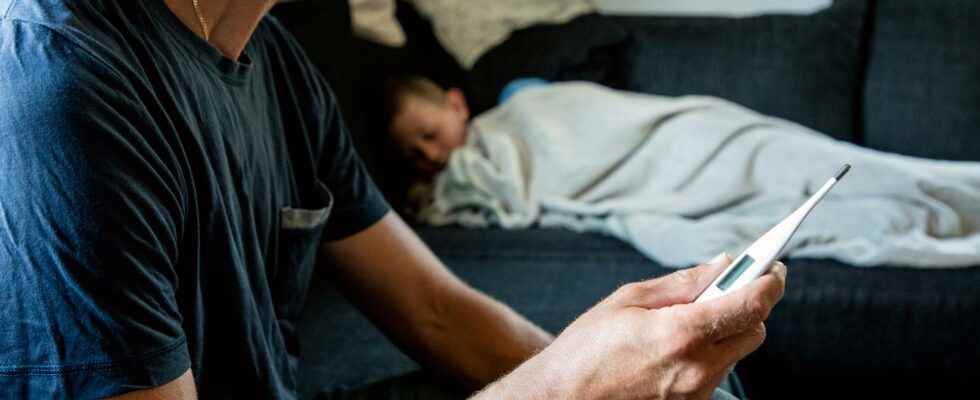Published: Less than 10 min ago
full screen
Next
In recent years, we haven’t actually had the most births in February, Försäkringskassan’s statistics show. Archive image.
1 of 2 Photo: Christine Olsson/TT
February is here. But in recent years we haven’t actually spawned most in February.
– The peak seems to have moved, says Niklas Löfgren at Försäkringskassan.
Coughing, snoring and more time at home than at work. During the second month of the year, the fishing usually reaches its peak.
The pattern of care for children, vab, has looked the same for many years. Low spawning in the summer, which increases during the autumn and reaches a peak in February and March.
– It has looked like this for as long as I can remember, for probably twenty years, says Niklas Löfgren, family financial spokesperson at Försäkringskassan.
But during the pandemic, something has happened. 2020 was a special year, at the beginning of the pandemic. Then the vaping went through the roof in March, with just under 1.4 million vaping days in that month alone, according to Försäkringskassan’s statistics.
Vab peaks during the autumns
Nor during 2021 and 2022 did we wobble at most in February. In 2021, we spawned less than usual throughout the spring.
– There has been speculation that we kept a pretty good distance back then, and that some schools had remote work, says Niklas Löfgren at the Social Insurance Agency.
Instead, nesting took off in the fall of 2021, with a nesting peak in October with over one million nesting days.
In 2022, hooking was again lower in the spring than in the autumn, with a peak in December.
– We have had to learn about during the pandemic. There have been higher vabs during the autumn, from the start of school until the new year, especially during 2021 and 2022, says Niklas Löfgren.
“Hard to predict”
According to Anders Lindblom, state epidemiologist at the Public Health Agency, the pattern of vaccination has changed because it has followed the outbreaks of covid-19.
The situation is special because we had a weaker immunity against the respiratory infections, which led to an increased spread.
Now the number of cases of influenza, RS virus and covid-19 is on the way down in society. The applications for VAB have also decreased during January this year, Försäkringskassan’s preliminary statistics show.
That could mean that there won’t be a hive peak in February this year either.
– It is difficult to predict this year. But it could be that we have already had our peaks when it comes to flu, RS virus and other respiratory infections. That they came earlier because the immunity has been worse, says Anders Lindblom.
Even if this year’s February would not be a peak year in terms of vab, the vab pattern will probably return to normal in the long term, according to Anders Lindblom.
– It is likely that things will go back to normal, when we have no restrictions that affect the spread of infection.
TT: Will we continue to talk about “vabruari” in the future?
– Yes, there is a risk of that.
Facts
Care of children (vab)
Compensation for childcare (vab) is called temporary parental allowance.
In addition to being at home with a sick child, you can also receive compensation if you visit doctors and dentists with the child, for example.
You can also receive vab compensation if you take care of a child because the regular guardian is sick.
As a general rule, you can babysit children between eight months and twelve years of age, but there are exceptions for younger and older children.
In 2022, Swedes spent 8.5 million days at home caring for children. This is an increase of 2.2 percent compared to 2021, according to statistics from the Swedish Social Insurance Agency.
Source: Försäkringskassan
Read more
